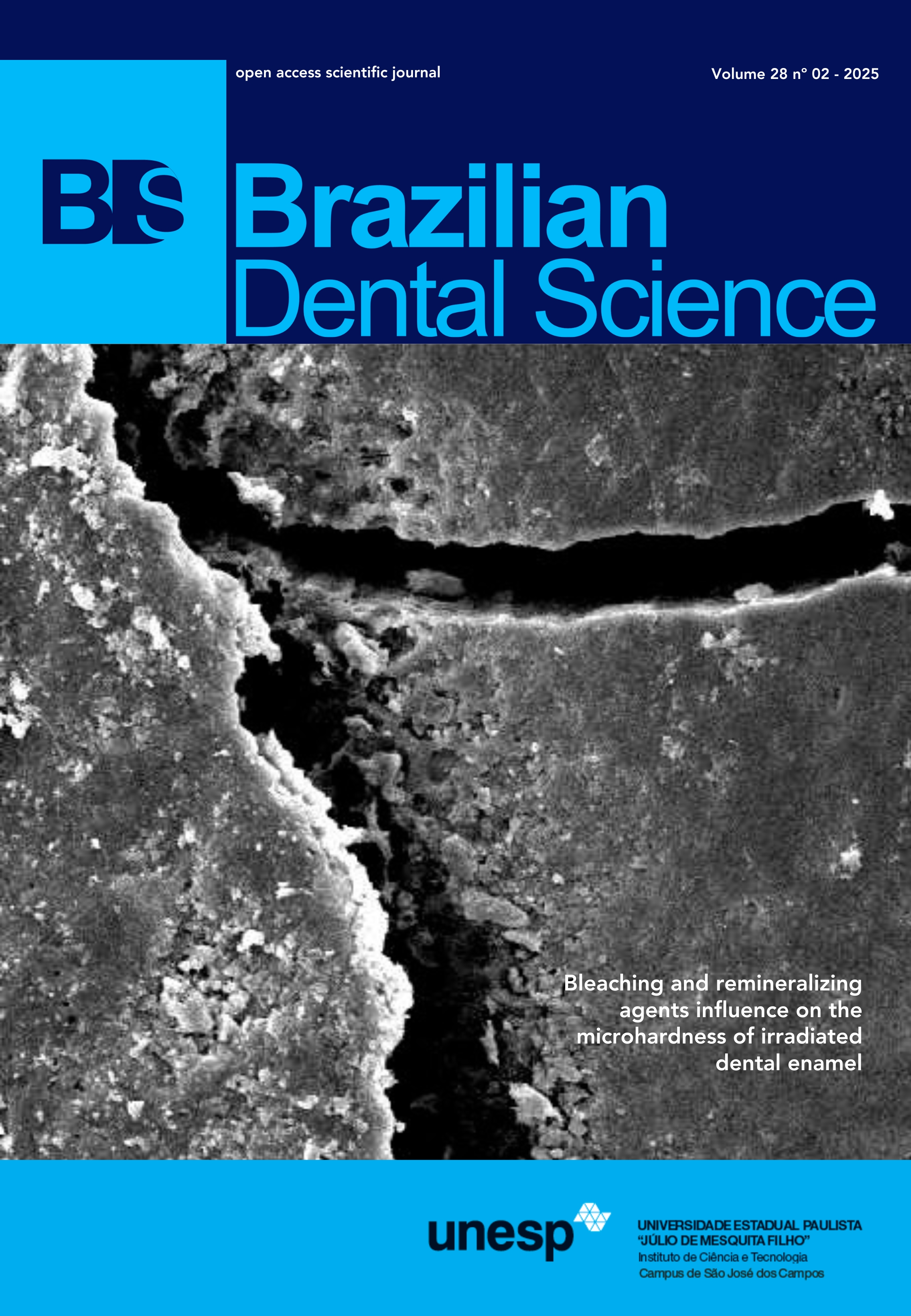Influence of gold and blue heat treatments on mechanical properties and phase transformation behavior of flat-designed rotary instruments
DOI:
https://doi.org/10.4322/bds.2025.e4638Resumo
Objective: To evaluate the mechanical properties and austenite phase transformation temperature of flat-designed rotary instruments manufactured with gold and blue heat treatments. Material and Methods: A total of 60 rotary instruments with a flat design 25.04 with gold (Flat File 25.04 – MK Life, Brazil) and blue (Prototype 25.04 - MK Life, Brazil) heat treatments were used for cyclic fatigue, torsional fatigue, and bending tests (n=30). The cyclic fatigue test was conducted in an artificial canal with a curvature of 60° and a radius of 5 mm (n=10). The torsion test was conducted to evaluate the torque (N.cm) and angular deflection (°) required for fracture (n=10). Finally, the 60° bending test evaluated the force (g.f) required to flexion the instruments at the 5 mm tip (n=10). Differential Scanning Calorimetry (DSC) analysis was performed to establish the initial (Ai) and final (Af) austenitic transformation temperatures. The data were statistically analyzed using the Kolmogorov- Smirnov test for normality and the unpaired t-test, with a significance level of 5%. Results: The cyclic fatigue test showed that Flat 25.04 gold instruments had significantly greater cyclic fatigue resistance (p<0.05). The torsion test revealed that Flat 25.04 gold instruments exhibited lower maximum torque (N.cm) and greater angular deflection (°) (P<0.05). The bending test showed that the gold instrument required less force (P<0.05). DSC analysis demonstrated that the gold heat treatment had a higher Af temperature (42.8 °C) compared to the blue treatment (32.2 °C). Conclusion: The different heat treatments impacted in phase transformation temperatures and on the mechanical properties of the instruments.
KEYWORDS
Cyclic fatigue; Endodontics; Flat design; Nickel-Titanium; Torsional fatigue.
Downloads
Downloads
Publicado
Como Citar
Edição
Seção
Licença
TRANSFERÊNCIA DE DIREITOS AUTORAIS E DECLARAÇÃO DE RESPONSABILIDADE
Toda a propriedade de direitos autorais do artigo "____________________________________________________________________" é transferido do autor(es) para a CIÊNCIA ODONTOLÓGICA BRASILEIRA, no caso do trabalho ser publicado. O artigo não foi publicado em outro lugar e não foi submetido simultaneamente para publicação em outra revista.
Vimos por meio deste, atestar que trabalho é original e não apresenta dados manipulados, fraude ou plágio. Fizemos contribuição científica significativa para o estudo e estamos cientes dos dados apresentados e de acordo com a versão final do artigo. Assumimos total responsabilidade pelos aspectos éticos do estudo.
Este texto deve ser impresso e assinado por todos os autores. A versão digitalizada deverá ser apresentada como arquivo suplementar durante o processo de submissão.




























